On Painting Landscapes > If you weren’t naturally handed a free pass to excellence or are coming to art late in the game, John Hughes has an encouraging message for you.
On Painting Landscapes: A Pep Talk
Learning to paint well, whether it be landscape or any other subject, is a discipline just like any other discipline out there. One could make the case that learning to paint is no different from learning to play an instrument, learning Karate, learning to ski well, becoming a lawyer, a doctor, an auto mechanic, or any of the thousands of things that people become proficient at; there really is no difference, aside from the specifics of those individual endeavors.
It’s always an interesting thing to me, when I see a very accomplished young artist or musician who seemingly masters their discipline with relative ease. It’s almost as if the Creator just mercifully handed this person a free pass to excellence. What’s up with that, one might ask? Well, what’s up with that could be a discussion all on its own, but that would derail what I’m about to say.
Regardless of how much talent one is endowed with, talent alone will never amount to anything much, without effort on the part of an individual who is trying to master their art form.
For my purposes here today, that art form is that of painting landscapes, and the question is, what does it take to learn to do it well?
Let me start by saying that if you want to excel at this discipline you will need a certain amount of dedication and a good work ethic. On top of that you’ll need the ability to concentrate on an intricate task for hours on end, which task is on the same level as a game of chess, each and every time you face a blank canvas. Like chess, your last win doesn’t guarantee a win in the future. For that you have to be fully engaged and “on your game!”
The one thing I know for sure is that even if you possess innate talent right out of the starting block, nature isn’t going to hand you anything on a silver platter. Nature by the way, doesn’t come already pre-designed and ready to paint, that task is left up to the artist! If we were trying to recreate nature we would probably be called “Naturists,” but we’re not, we’re “Artists,” and as artists we need to do what artists do, and that is design.
So let’s get moving in that direction and put in the necessary work. Having said that, unfortunately, hard work isn’t everything either. The startling truth is, hard work on its own won’t produce favorable results. Hard work has to be coupled with “smart work” in order to be effective.
For whatever reason, those young artists who managed to excel in their craft early, excelled not because they were necessarily the sharpest tool in the shed, but because they recognized something early that others their age didn’t, and that thing is the underlying principles associated with the painting craft. They saw past their mere desire to recreate a pretty scene from nature, and latched on to the real key to understanding; light and design are everything, when it comes to painting landscapes.
In other words, they learned how light affects natural forms in nature and combined that knowledge with a study of design principles. But that’s not all, they also had to learn how to use the tools of the craft, which are drawing, color, values, edges, and brushwork. This is where dedicated practice pays off, and a lot of it is necessary in order to attain proficiency.
So the real question is, are you willing to put in the work to achieve the results you want? Now I’m not talking about leaving the cares of this world behind and entering a monastery, or anything like that. We all have to function in this world and find time to paint when possible. Some will always have more time to do that than others. What I’m talking about is when you are studying painting, doing it the right way. Are you willing to do that?
If so, it’s best to start with an honest self-assessment of your current knowledge, and go from there. At least now, you have a roadmap to follow and won’t wind up spinning your wheels in an endless pursuit of the proverbial carrot, which always seems to stay several feet in front of you.
A Landscape Painting Roadmap
Let me repeat what the landscape painting study roadmap consists of: Learning as much as you can about light and design. Along with that, learn to draw, mix color, recognize correct values, understand and use edges effectively and finally, know how to efficiently apply the paint with a brush or palette knife.
Once you understand the roadmap, you will be able to make real progress. The good news is that even if you are getting a late start in this game, you can make some amazing progress by recognizing the same underlying principles as the prodigy did.
Please be aware though, that our worst enemy in all of this, is not a lack of talent, but our own preconceived notions about what the painting process involves.
Some think that copying a scene faithfully is the answer. Others think that being able to paint like “so and so” will do the trick. Still others feel like the real answer lies in a particular technique of painting. They mistakenly assume that there must be some sort of trick to painting water, rocks, trees…you name it, and wind up purchasing a certain brush or tool to do the job.
Of course, all of these notions lead to a dead-end, and eventually frustration, as the student of painting spins their wheels year after year, trying to catch that illusive carrot!
Might I Suggest …
First and foremost, be honest with yourself. Make an honest assessment of where you stand in relation to the roadmap. Be teachable, because this hurdle is usually the tallest one to jump, or eliminate completely. Being teachable means that you are willing to drop old ideas that are not working for you, and opening yourself up to new ones.
Above all don’t become discouraged; the shortest route to success is often a slight detour back around to revisit vital ground that you sprinted past on your first lap. Never forget that revisiting the basics is a best practice for anyone, including advanced professionals in the field.
If you’ve ever wondered why professional athletes constantly practice the fundamentals of their sport, this is why; because a firm grip on the fundamentals of any discipline is by definition, an advanced skill.
If you will do this, happily you may just find out that the real problem is not how much you don’t understand, but how much you have not been applying, that you already know.
This is a real epiphany when it happens, because all of a sudden the road ahead doesn’t appear to be so daunting after all. You begin to recognize that you have a lot of stored up knowledge that you are not applying to the canvas. Maybe you were subconsciously thinking that all of that knowledge would just naturally find its way on to your painting. In reality, this is rarely the case, and most often all of us need to make a ton of conscious decisions, before these practices can turn into the kind of artistic reflexes, which make the painting process seem as effortless as riding a bike.
Remember also to stop comparing yourself to others. Forget about technique, that will happen naturally if you will let it. Don’t memorize a gazillion rules for painting; this approach leads you nowhere. Learn principles instead, and by doing so, you’ll be adhering naturally to rules that you didn’t even know existed, and maybe even making up a few of your own.
Please remember this, that painting is designing, and the real key to designing well lies in the use of shapes, values and edges. Color and brushwork are like icing on the cake; nice but not totally necessary.
Now a few final thoughts, and this is probably the most important one; painting is all about relationships – relative shapes and sizes, value contrasts and the quality of one form’s edge next to another. Learn to observe relationships of every kind, and that includes colors and textures, when you are ready.
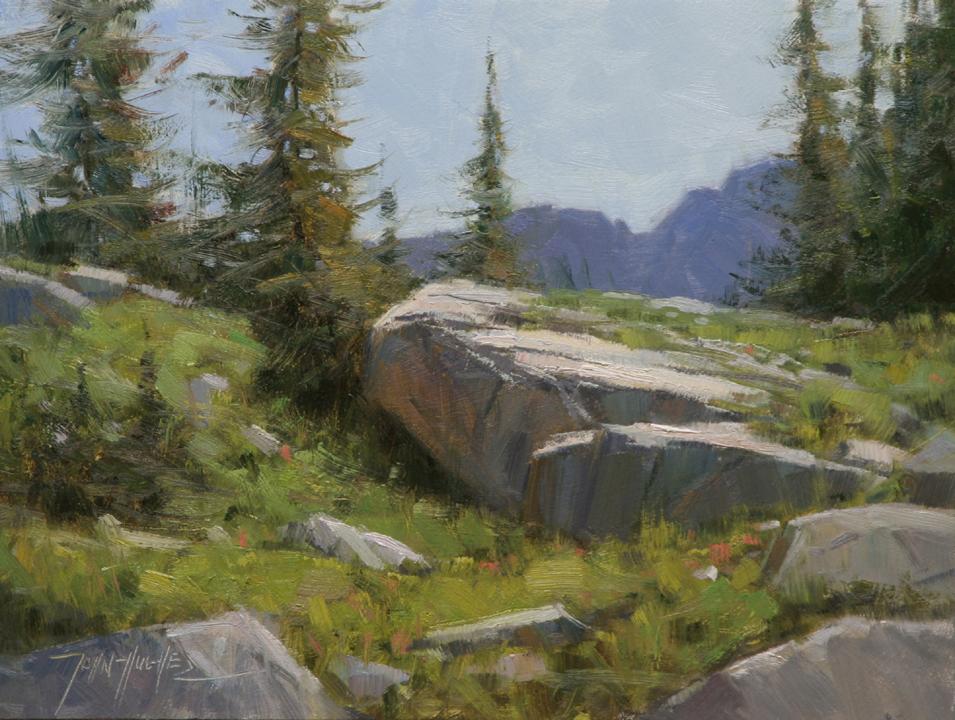
Painting outdoors is a must for any would-be landscape painter. This doesn’t mean that you have to spend all of your time out there, but this is where you will make the best observations of your subject. After all, nature is your subject, so spend some time in it.
Finally, your powers of observation will ultimately tell you everything you need to know about how to paint a particular scene. So take your time to observe, learn to see…really see, even when you are not painting. The understanding you will gain through this one simple exercise will be worth all of the effort.
What are your thoughts? Share them with us in the comments below.
Visit EricRhoads.com to find out all the amazing opportunities for learning more about painting landscapes, including:
– Online art conferences such as Plein Air Live
– New video workshops for artists
– Incredible art retreats
– Educational and fun art conventions, and much more.
> Subscribe to Plein Air Today, a free newsletter for artists
> Subscribe to PleinAir Magazine so you never miss an issue

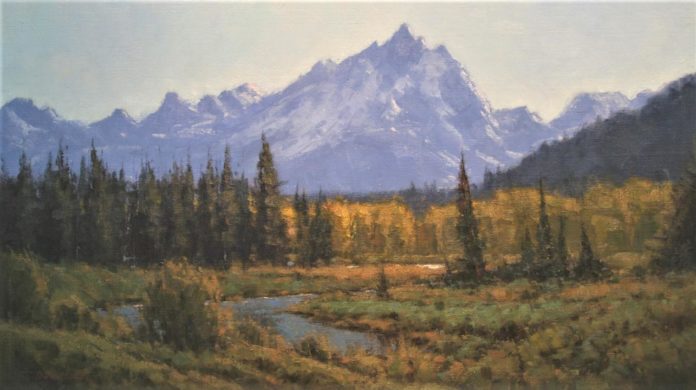
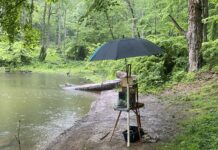
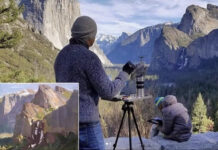
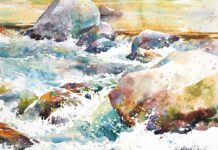
Thanks.
Thank you John; very good points! For some of us (me) is a lifetime exhausting learning process.
This is one of the best art advice articles I’ve ever read. It’s realistic. Too often students expect to be granted some magical, fantastical one-step miracle transformation through a class or a workshop. Proficiency isn’t bestowed. It’s earned.
All of the articles I’ve read of yours, John, have helped me a lot, since they contain straight-forward, honest advice about how to learn to improve the skills involved in painting. If I can just remember what you point out, things will go much better for me in my attempts at painting – that’s why I print out and keep many of the writings of yours that I have found.
Thank you for a wonderful article. You are a good teacher as well as a terrific artist.
Thank you to all of you who commented on this article. I’m a bit late on replying, but please know that your thoughts are appreciated!
This article reinforces what that little voice inside tries to tell me. Seeing it in print makes me stop and think where I am going, what to rely on and what to let go of. Great article.